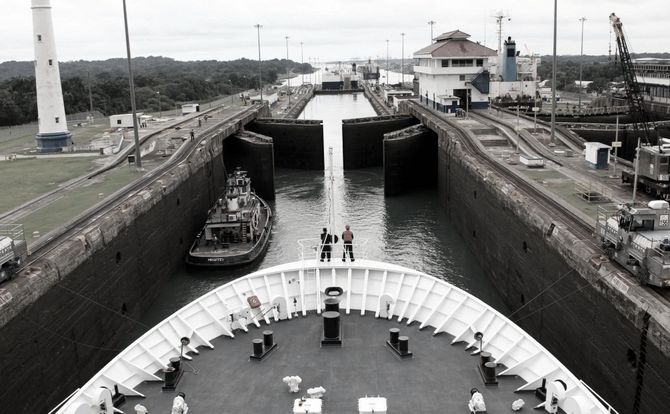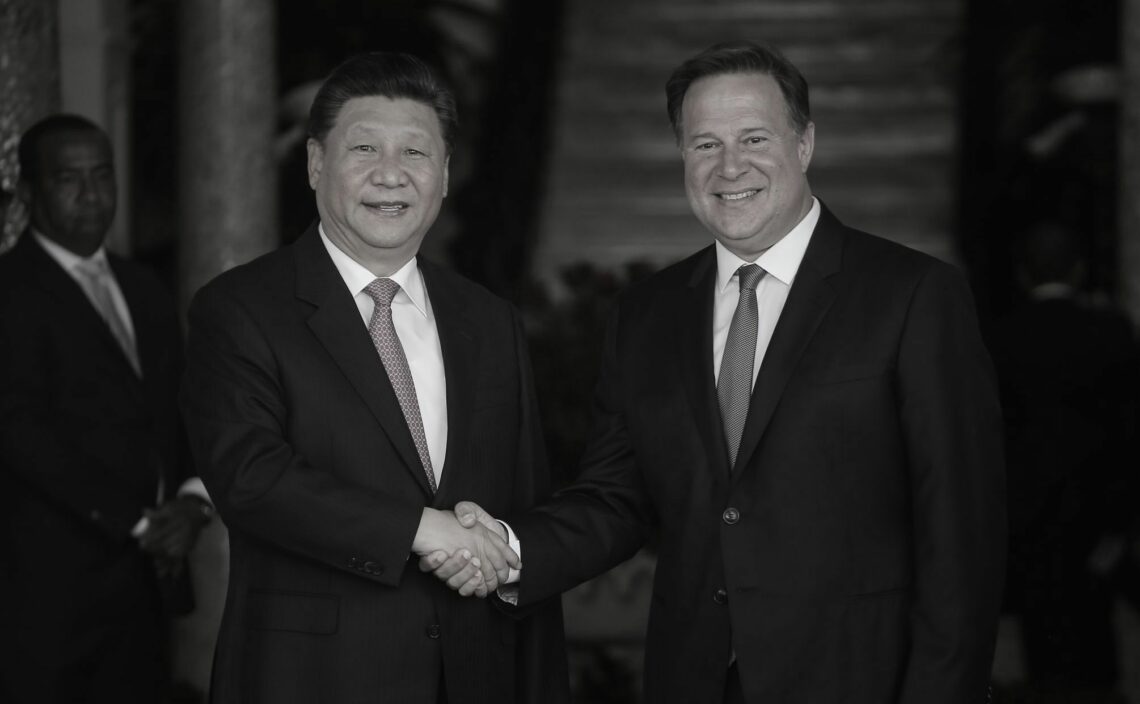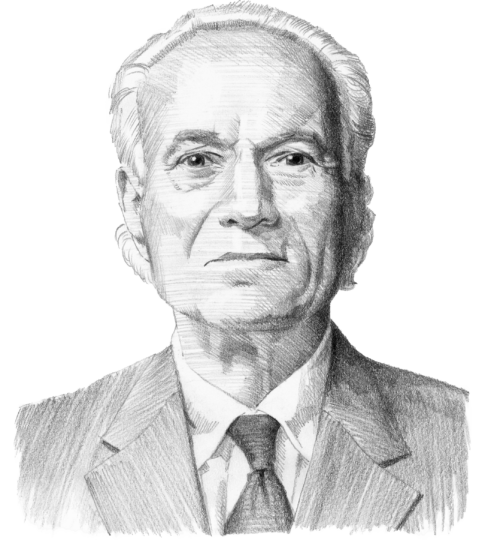Panama, China and the Canal
For Panama, the partnership with China is an attempt to revive its economy. For Beijing, it is a chance to gain influence over the crucial Panama Canal. The question is how Panama’s new government will balance its appetite for Chinese investment with its need to maintain close ties with the United States.

In a nutshell
- Partnership with China could help boost Panama’s lagging economy
- It also carries significant risks, like becoming too dependent on Beijing
- Panama’s relationship with the U.S. could also suffer
- The new government will have to balance ties with Beijing and Washington
In the golden age of the Spanish Empire, the Panamanian isthmus was the transoceanic transit point for the shipments of gold and riches that buoyed the Spanish monarchy. It was also a hotbed for piracy and English privateer attacks. At the dawn of the 20th century, the government in Washington saw building a canal across the isthmus as critical to its national security. To make it happen, the U.S. engineered the creation of a new nation in what had been a province of Colombia. Now, just over a century later, Panama is once again a focus of global great power competition.
Corruption in focus
The Panama Papers, published in 2016, revealed that billions of dollars in laundered money from corrupt politicians and crooked businesses around the world lay hidden in Panamanian banks – none of which, strictly speaking, was in violation of Panamanian law. Since then, Panama’s government has passed stricter regulations on the real estate and banking industries in an effort to come closer to international standards. Thus far, the results have been mixed. In 2018 Panama ranked 93rd out of 180 nations in Transparency International’s Corruption Perceptions Index, a slight decline since 2015.
The fight against corruption was the main theme of the May 5 presidential election, won by opposition leader Laurentino Cortizo in a close vote. Mr. Cortizo leads one of the country’s two major established parties, the Democratic Revolutionary Party, which has not held the presidency since 2009. Few expect much change, however, in Panama’s politics or policies.
Like the other candidates, Mr. Cortizo focused his campaign on wiping out corruption and changing the country’s political culture. He promised that a more transparent, accountable leadership would restore confidence and economic growth. Although he is expected to continue the regulatory reforms of his predecessor, that he belongs to a traditional party and has a long record in Panamanian politics leads some to question whether he is the right leader for the job.
Panama was one of the first Latin American nations to sign on to the BRI.
If he falls short, Panamanians may have a wider set of options in the future. Ricardo Lombardo, a lawyer and a younger, independent candidate who made his name as an anti-corruption activist, won 20 percent of the vote.
Booming business for China
Panama’s recent years of corruption and a slumping economy have been a boon for China. Beijing is comfortable with political risk. Since 2010 China has doled out almost $100 billion in investments and loans to Venezuela, Ecuador and Argentina – all governments previously under various degrees of international sanctions for debt default and fraudulent accounting.
Panama’s efforts to revive its economy have coincided with China’s announcement in 2018 that it was extending its Belt and Road Initiative (BRI) to fund transport infrastructure (railroads, ports, airports, highways) to Latin America and the Caribbean. Panama was one of the first Latin American nations to sign on after dropping, in June 2017, its diplomatic recognition of democratic Taiwan – a price Beijing demands of any BRI customers. Soon after that surprise decision by the administration of current President Juan Carlos Varela, China and Panama signed 19 new agreements for cooperation, including Chinese investments in canal-related services, a potential east-west railway across Panama, and dialogue toward a free trade agreement.
Over the last year these deals have borne new Chinese-built container and cruise ship ports on both the Pacific and Atlantic sides of the country, third and fourth bridges over the Panama Canal, two natural gas power plants, and investments in Panama’s free trade zone (which is increasingly dominated by Chinese firms). All of these are either already built or under construction, except for the new, fourth bridge over the Canal, which has only been confirmed.

China and Panama are in serious talks about a new railway from Panama City to David, a city near Panama’s western border with Costa Rica. There are even rumors that China may build another set of mega-locks in the Canal to allow passage of the newest, largest Chinese container ships and oil tankers – only a few years after the Canal’s last expansion. Chinese companies and Beijing are likely looking ahead a decade when a significant share of China’s imported oil and gas, as well as soy, grains and minerals from Brazil and Argentina, will all flow through the Canal to China.
Along with this economic investment, China is engaging in cultural outreach in Panama. There are new programs for training journalists, more broadcasting from Chinese state media, and various cultural cooperation programs including the hosting of dozens of Panamanians on all-expenses paid, short-term tours and instructional courses in China on the nation’s history, culture, and politics.
China’s cultural outreach is similar to, though larger than, similar efforts other countries undertake. And new, more efficient transport and infrastructure can vastly improve and diversify Panama’s economic prospects, and open opportunities for growth beyond the capital. There are, however, two significant challenges Panama must overcome.
Managing development
The first involves governance and the enforcement of laws. Many observers fear that this new growth is coming too fast for a government that has only had control over the nation’s welfare since the Canal was handed over to them in 1999, and which was recently humiliated by the revelations in the Panama Papers. The last two presidential administrations have been wracked by corruption scandals, and President Varela’s deals with China, negotiated with little or no input or oversight from the National Assembly, are part of the problem. Panama is cooperating with the multinational Financial Action Task Force (FATF), which found in January 2019 that the government has made progress in addressing “technical compliance deficiencies” in its action plan to tackle money laundering and terrorist financing – but it is not yet fully compliant.
President Trump’s foreign policy toward Latin America is all sticks and no carrot.
If the new government does not show marked progress after it takes office in July, Panama’s banks could potentially face legal sanctions. If this were to occur, the country could follow the example of others and welcome further penetration by Chinese banks and government lending – a move that has led elsewhere to debt traps and strategic concessions, like Venezuela’s oil and a Chinese naval base in Djibouti. So long as Panama’s economy remains healthy, the government should be able to avoid such pressures, at least in the near term. But considering Panama’s strategic value as a logistics hub for the Americas, these prospects – and Chinese machinations – cannot be dismissed.
Under Washington’s shadow
The second challenge – related to the first – is Panama’s close and complex relationship with the United States. Like other Latin American and Caribbean nations, Panama rejects the notion of a zero-sum game in its relations with the global superpower and its emerging rival. Washington, however, is increasingly concerned about China’s creeping spread of loans, projects, gifts and diplomacy across the region. The Trump administration has warned its neighbors that the Monroe Doctrine is back in effect, and to be wary of Chinese “imperialism” – a slur many in the region found rather rich.
President Trump’s foreign policy toward Latin America is all sticks and no carrot. He cancels trade deals and threatens to end security and development assistance unless countries do as he pleases. For Panama, where the U.S. is still its top trading partner and security patron, and with a strip of waterway deemed critical for U.S. national defense, this hardline stance poses significant risks. Touting a vague, aspirational national strategy of bridging the world, and staying friends with all parties, Panama’s government may find its maneuvering space ever more constricted, and its every project scrutinized, as long as tensions between China and the U.S. remain high.
Panama’s new government will have to walk a tightrope between capitalizing on China’s appetite for investment and keeping the trust of Washington and the international community. Much will depend on how well, and transparently, it negotiates a free trade deal with China, and regulates the terms and performance of its huge infrastructure deals. Chinese companies have shown they are willing to thrive via corruption and waste, but also within relatively well-regulated markets. Panama’s government will have to step up its accountability and performance if it is to navigate successfully the choppy waters of great power competition.








